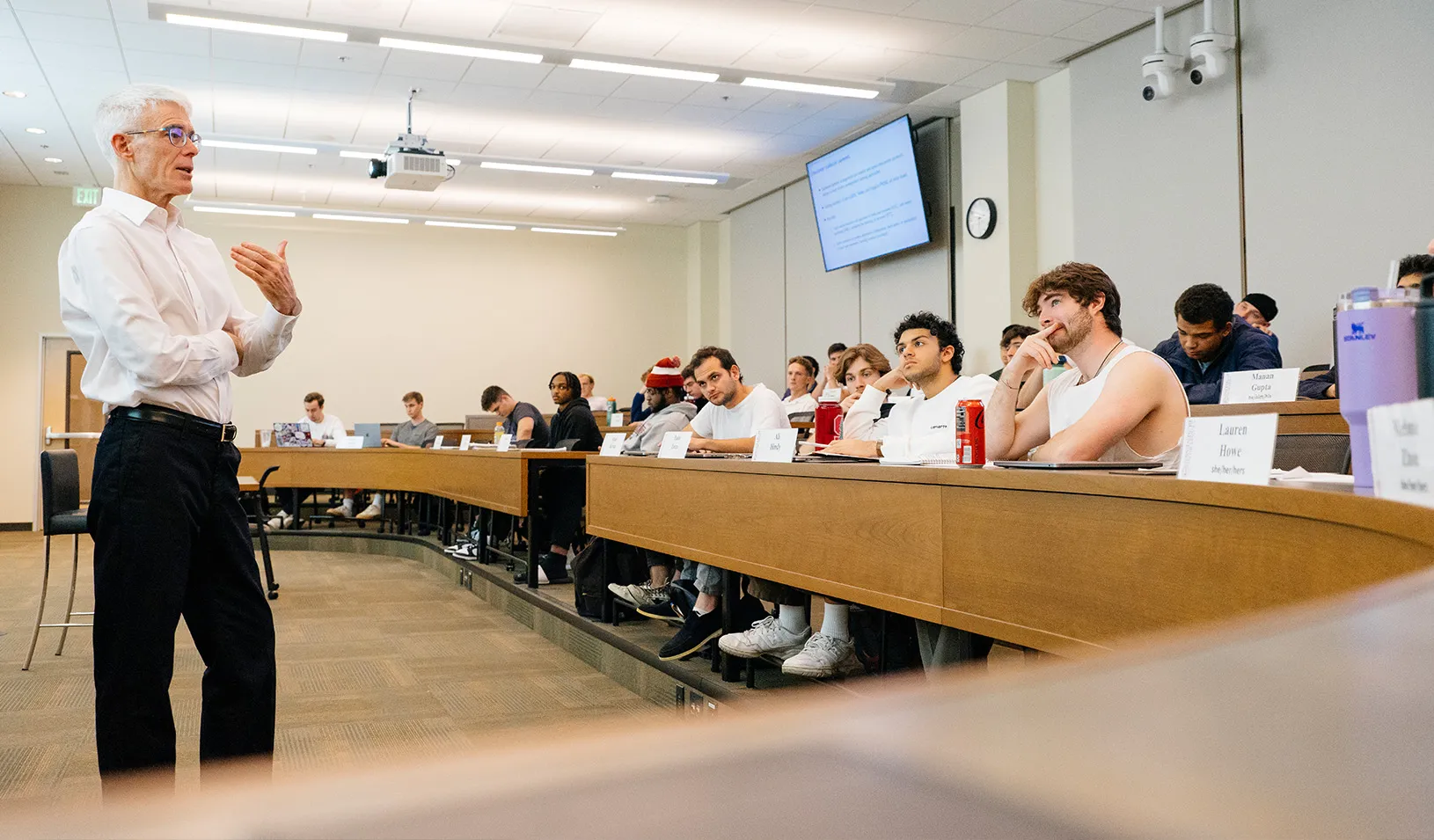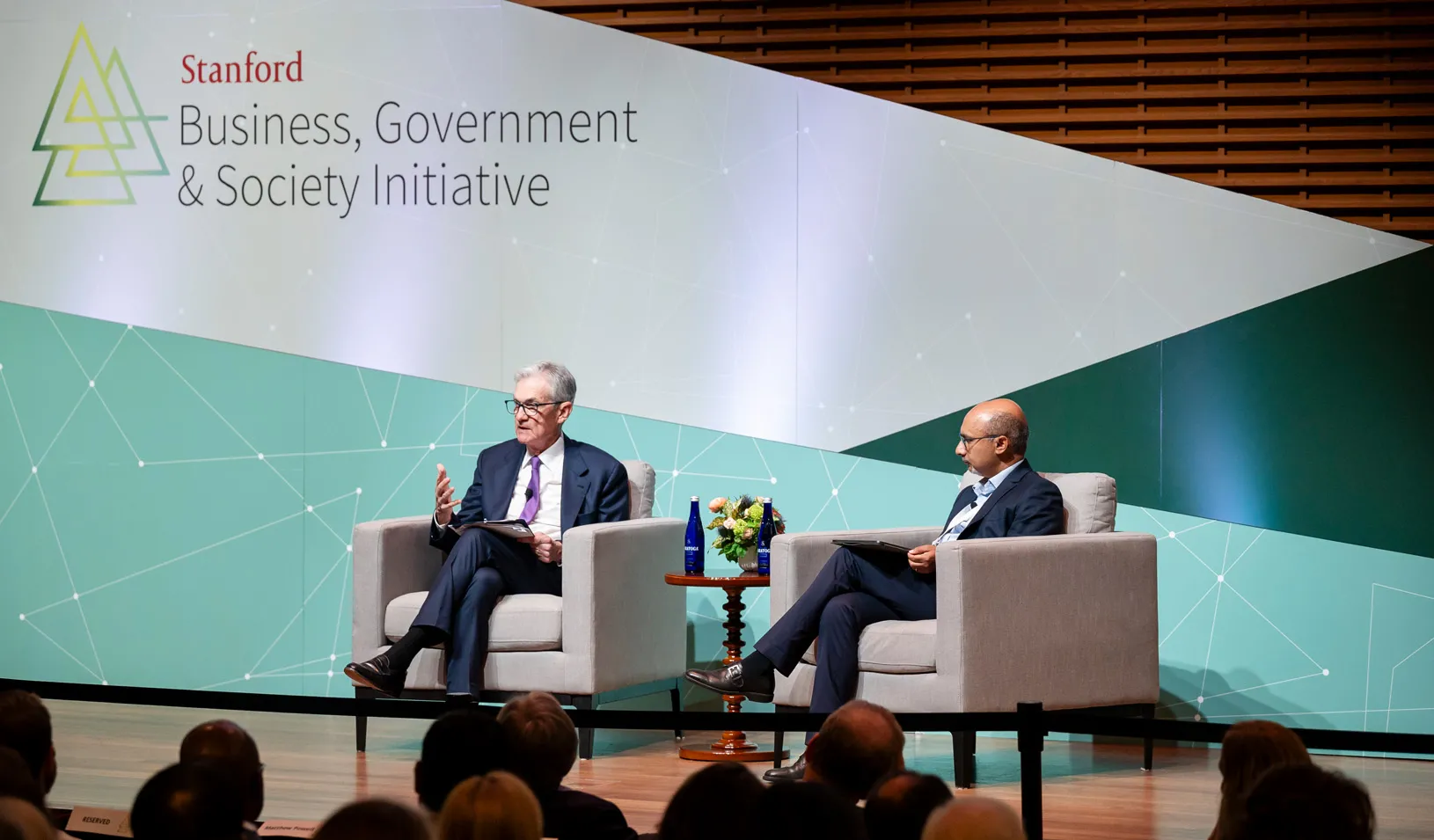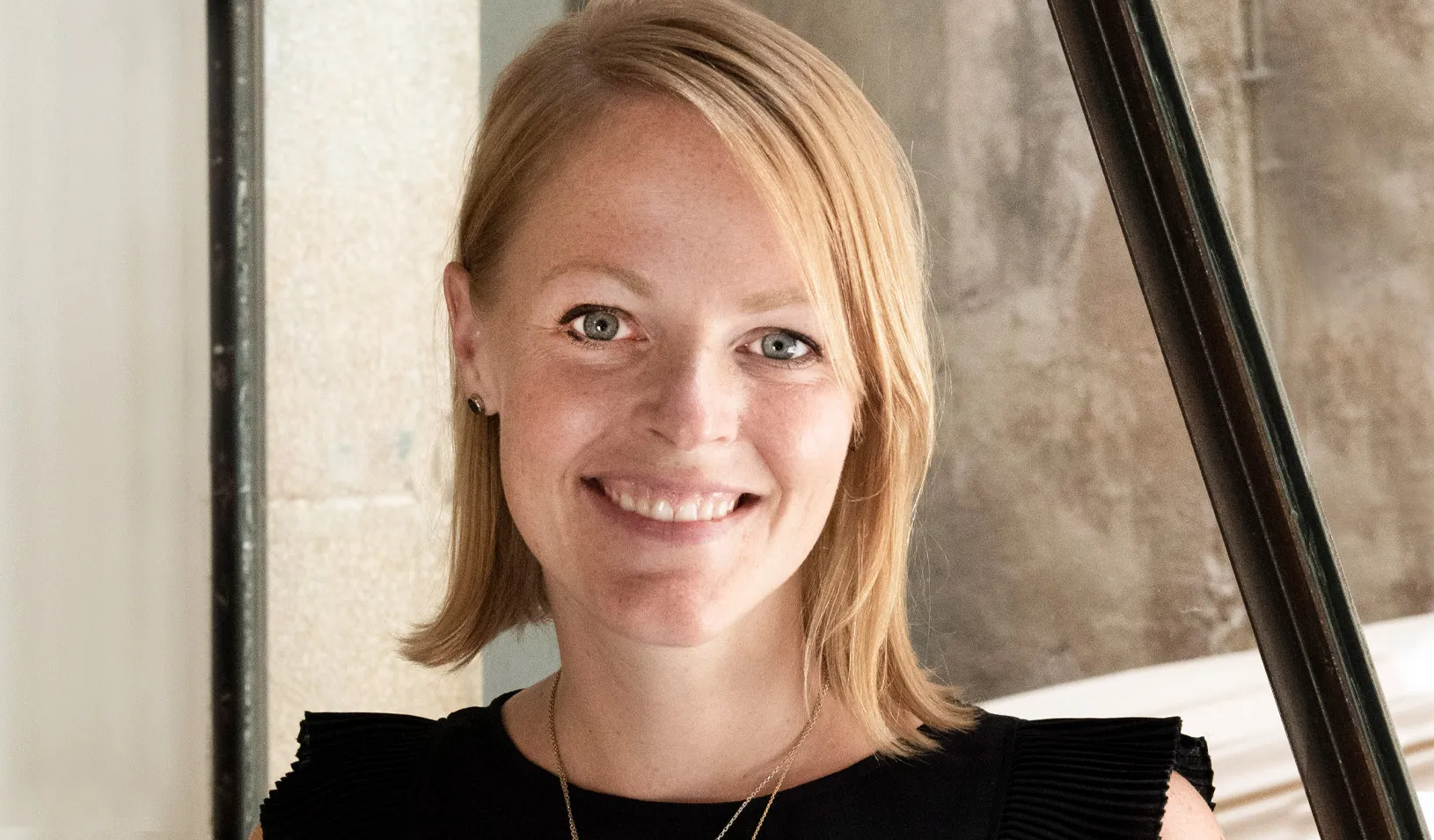Michael Shanahan, MBA ’65, Honored with 2009 Arbuckle Award
The Capital Research and Management Co. Chairman Emeritus is the 39th leader to receive the award, presented by Stanford GSB Alumni Association.
February 20, 2009
Capital Research and Management Co. Chairman Emeritus R. Michael Shanahan, who helped his firm blossom into one of the three largest U.S. mutual fund companies and nurtured such startups as Advanced Micro Devices and Sequoia Capital, was presented with the prestigious 2009 Arbuckle Award by the Stanford GSB Alumni Association on February 19.
In becoming the 39th leader to receive the award, Shanahan, MBA ‘65, explained to the audience how some of today’s financial crises could have been averted if more people knew what his Stanford professors did four decades ago. He recalls learning that quantitative methods are not always ideal because some variables are difficult to quantify, making their statistics unclear.
“As one professor said, ‘Use quantitative methods to develop insights, not to substitute for them.’ That has held me in good stead for a long time.”
Shanahan said Wall Street often was preoccupied with measurable statistics, looking at investment models rather than analyzing the details that could lead those investments to crumble. “Risk is, after all, a four-letter word.”
In introducing Shanahan, John G. McDonald, Stanford Investors Professor of Finance at the Business School, described how Shanahan started as an analyst at Capital in 1965, then became research director in 1968 and started making venture capital investments in companies like AMD. McDonald said Sequoia Capital, a leading venture capital firm in Menlo Park, was incubated at Capital. Today clients of subsidiaries of the Capital Group Companies have assets of over one trillion dollars.
McDonald, who has known Shanahan since they were undergraduates, praised his friend’s honesty, integrity, generosity, deep humility, and love of Stanford. The humility was particularly evident as Shanahan discussed his time at Stanford and his decision to work for Capital.
Shanahan explained how his service in the Navy after receiving his AB from Stanford in 1960 helped him appreciate what he missed in his undergraduate years. When he was a freshman in 1956, Shanahan recalled, he had a Navy scholarship and an appointment as an officer awaiting him after graduation, and he quickly realized that he needed to make only a modest effort to get his degree.
“I proceeded to invest the near minimum and missed a tremendous opportunity,” he said. “Early in my Navy career, I discovered that many of my fellow junior officers had distinguished themselves more by what they had learned and the effort that they expended than by the name or the status of the college that they came from. It didn’t take me long to see my mistake.”
In late 1962, Shanahan decoded a message from the Bureau of Naval Personnel suggesting that because of developments in Vietnam, naval officers who normally should have the option to go into the reserves after three years of service — such as Shanahan — should be denied that option unless they planned to go to graduate school or got hired by a defense contractor. “So, you guessed it: I applied to 10 business schools and 10 defense contractors.”
Shanahan had good reason to embrace his education far more once Stanford accepted him in the Graduate School of Business. Thanks to the efforts of the late Dean Ernest C. Arbuckle, after whom the award is named, the school had increased in stature. Shanahan said the class of ‘65 was among the first to benefit from Arbuckle’s drive to recruit faculty and students, revise the curriculum, and provide intensive staff support.
“I needed all the help he devised,” Shanahan said.
He recalled that the MBA program’s focus was on business enterprises, but that Arbuckle stressed the importance of studying the people filling those jobs, rather than just the typical analysis of a job’s function within the enterprise. “It was a revelation—not overwhelmingly popular, but overwhelmingly successful.”
Shanahan said that without his experience analyzing processes and people at the GSB, he would never have considered working at a place such as Capital Research. But he realized that the work there would involve analytics similar to those he had studied.
“In all candor,” he said, “I chose Capital because it was the easiest one to leave. My job was to go out and interview a bunch of companies and get to know their managers real well. I figured if I was any good, one of them at least would be willing to hire me if it didn’t work out at Capital.”
He never took the option. “I spent 44 years there,” Shanahan said.
The Arbuckle Award, which recognizes excellence in management leadership, has previously been given to such people as former Secretary of State George Shultz, investor and banker John Scully, MBA ‘68. and longtime Intel leader Andy Grove, lecturer in business at the School.
“I am doubly honored to be included in a list of such distinguished business leaders,” Shanahan said.
By Dave Murphy
For media inquiries, visit the Newsroom.
Explore More
Back to Class: Pathfinder

Business, Government, and Society Forum Looks at New Demands on Leadership

Erin Nixon Joins Stanford GSB as Assistant Dean of Admissions
